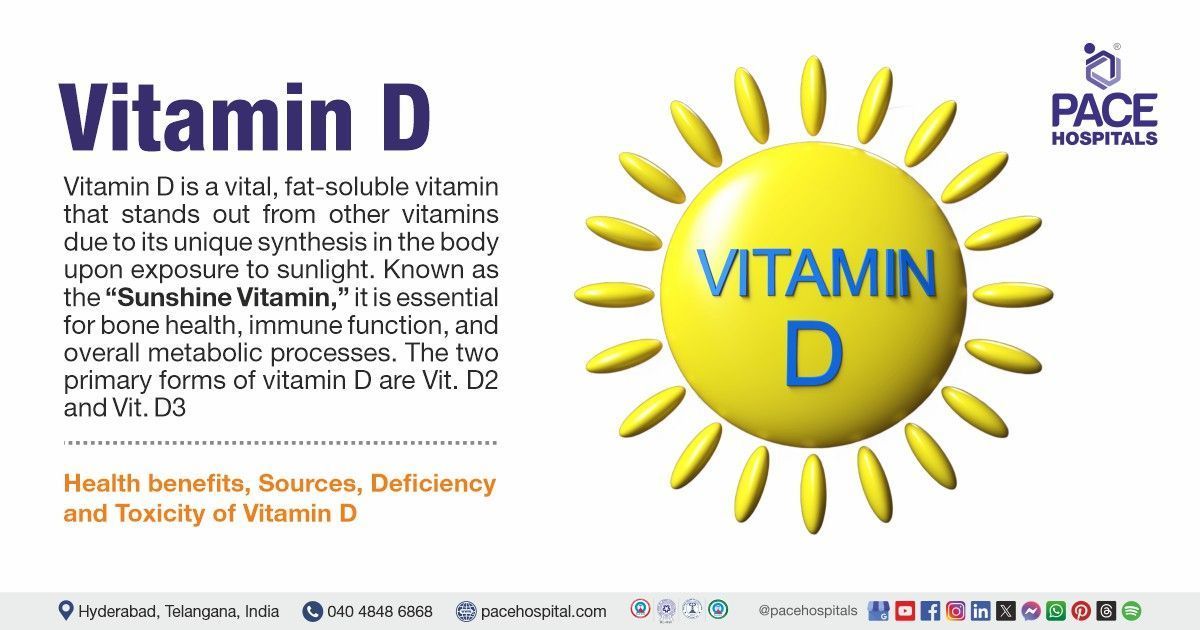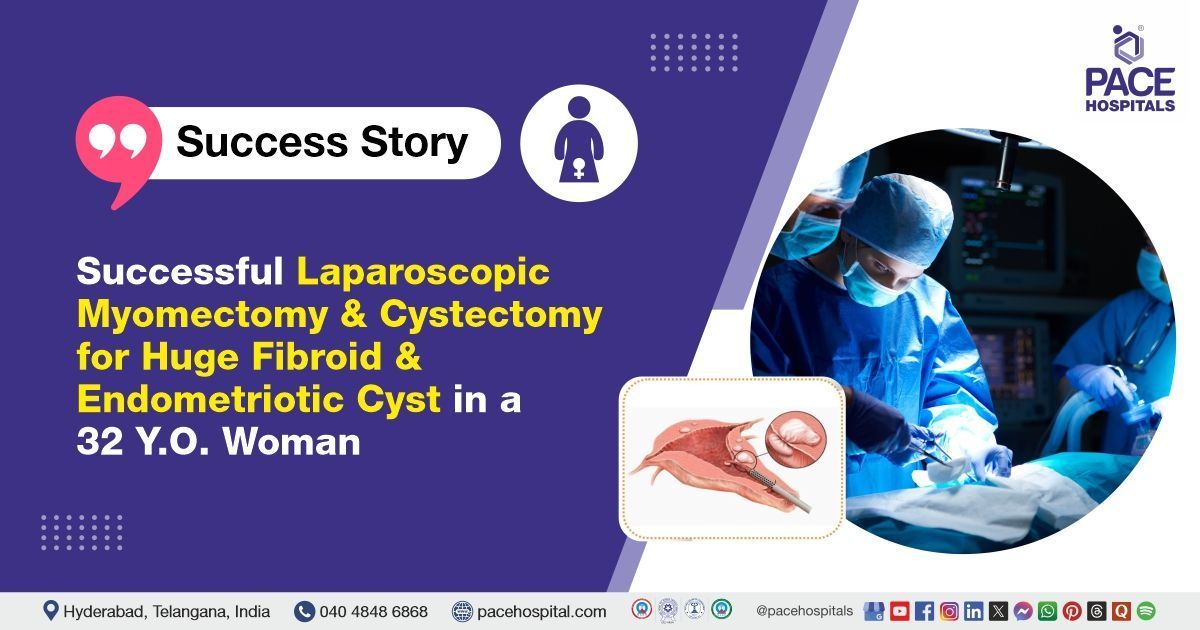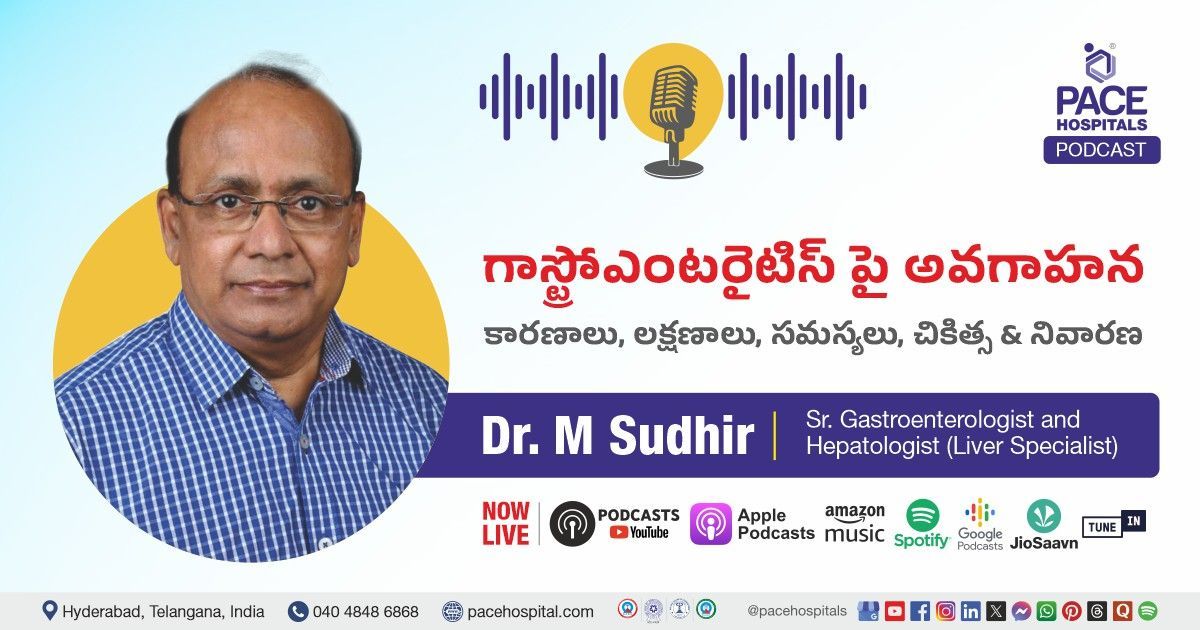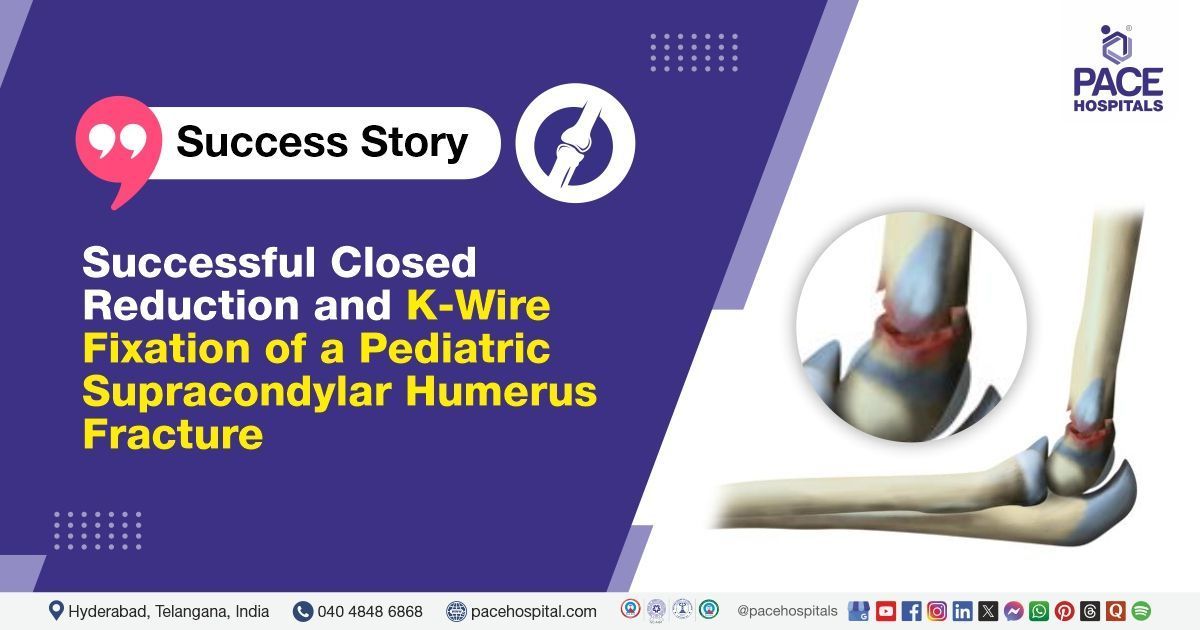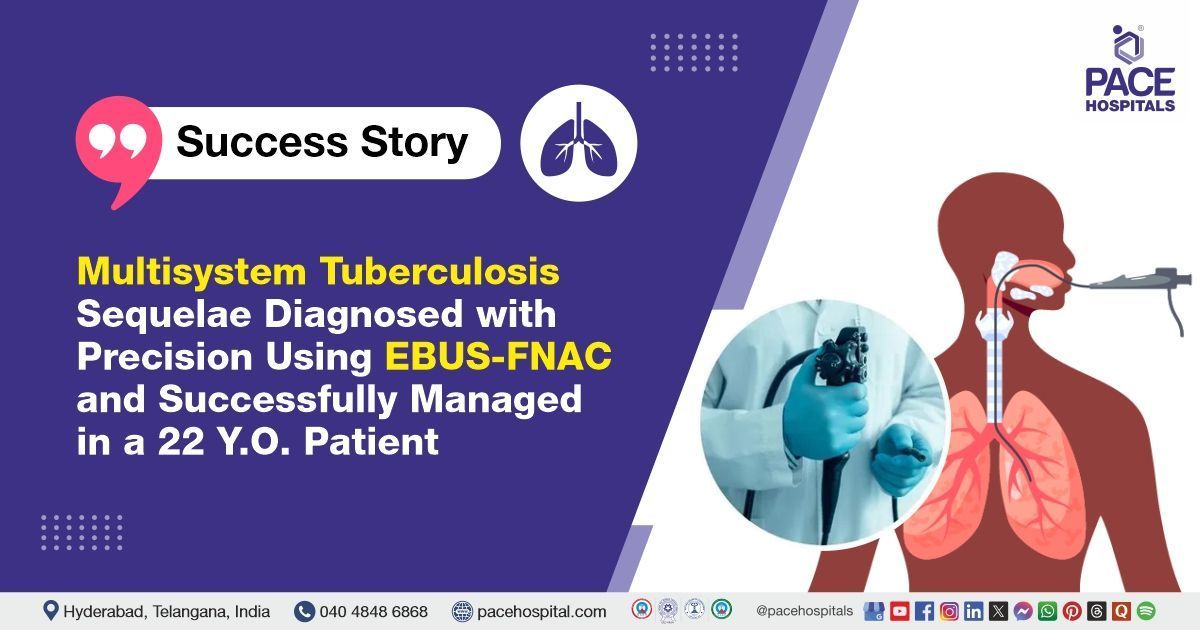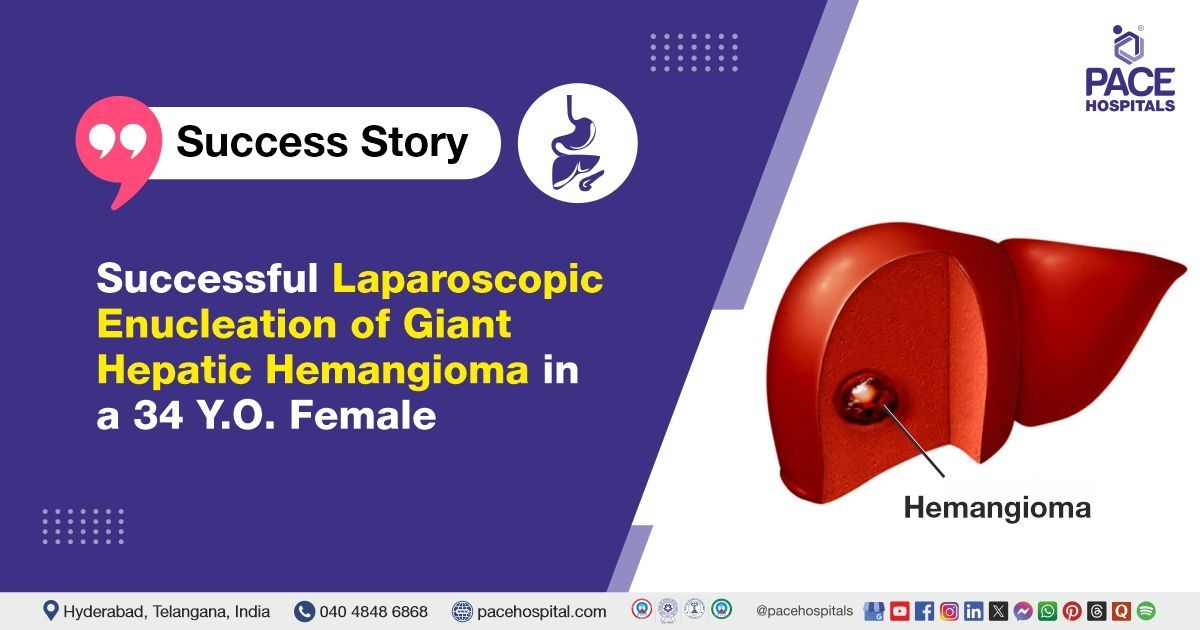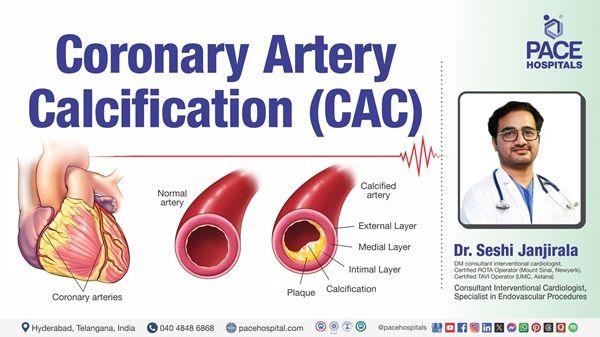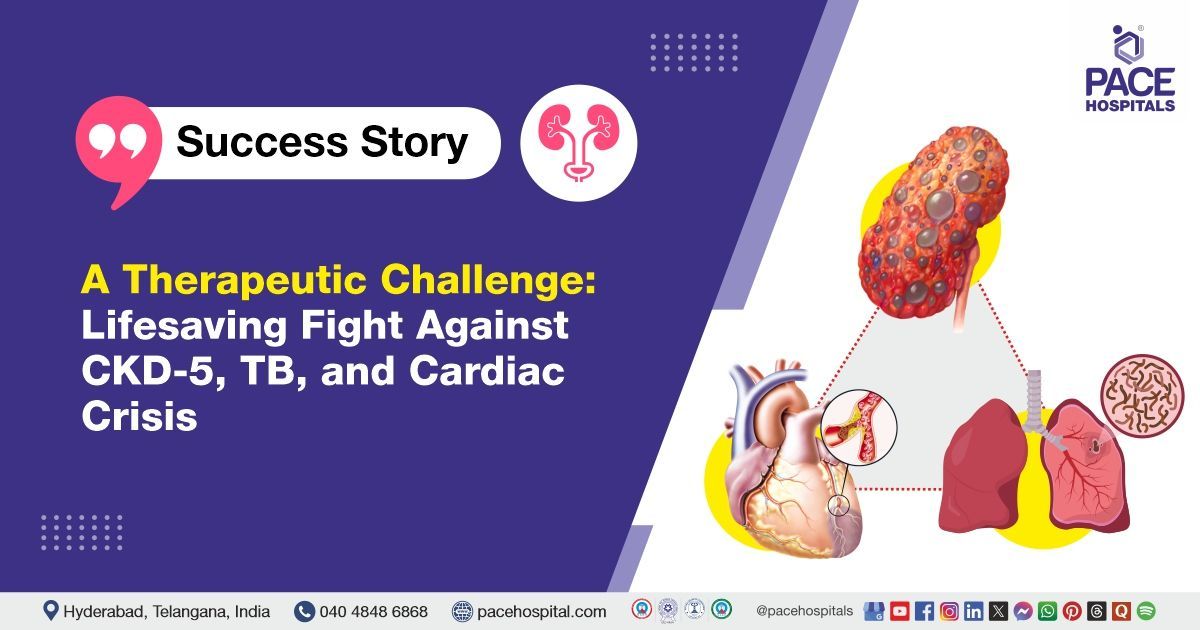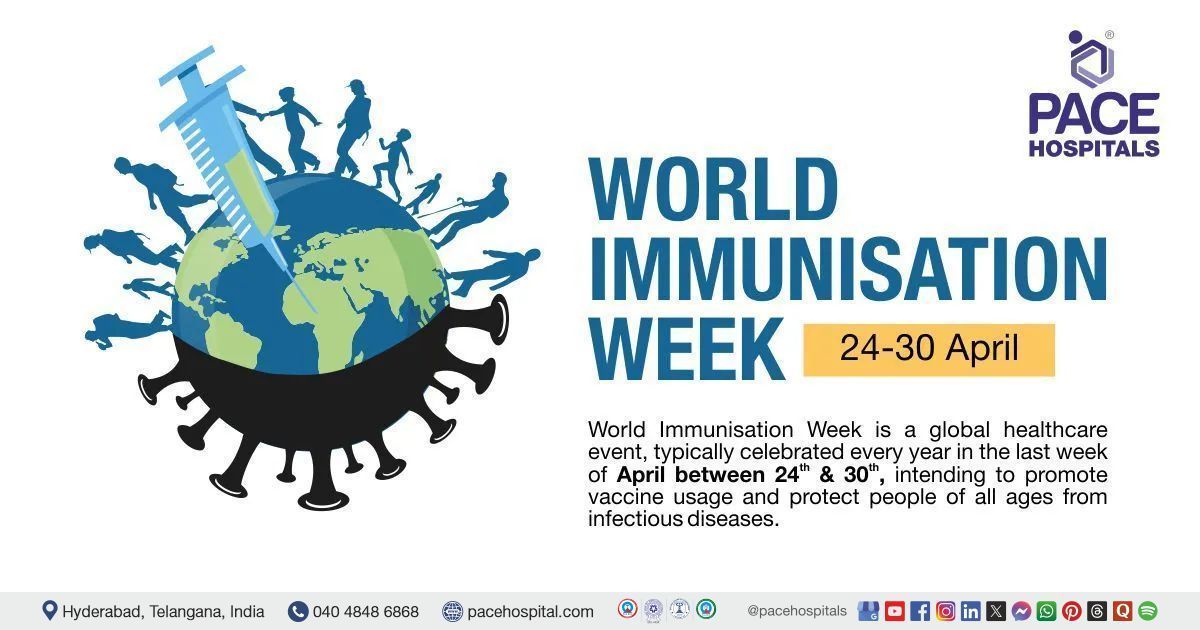Vitamin D - Sources, Benefits, Deficiency Symptoms, Risks & Treatment
Vitamin D is a vital, fat-soluble vitamin that stands out from other vitamins due to its unique synthesis in the body upon exposure to sunlight. Known as the “Sunshine vitamin,” it is essential for bone health, immune function, and overall metabolic processes. There are two primary forms:
- Vitamin D2 (ergocalciferol): Primarily derived from plants and certain fortified foods.
- Vitamin D3 (cholecalciferol): Cholecalciferol is usually produced in human skin upon exposure to sunlight and found in animal-based foods.
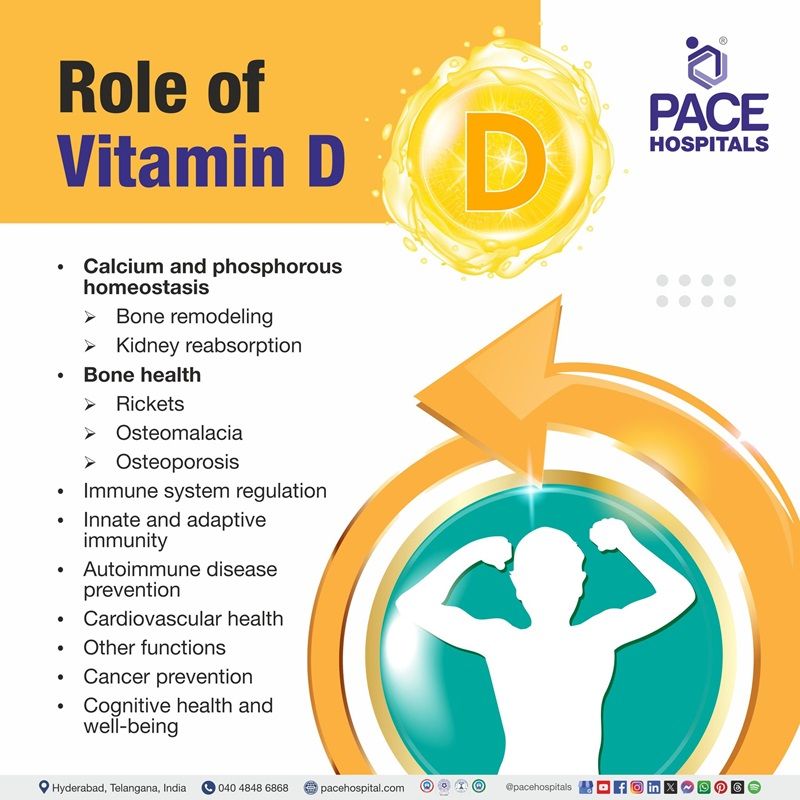
Role of vitamin D in human
- Calcium and phosphorus homeostasis: Vitamin D increases calcium absorption and absorption of phosphorus, which are crucial for bone mineralization.
- Bone remodeling: Calcitriol works with parathyroid hormone (PTH) to stimulate osteoclasts, releasing calcium from bones into the bloodstream when calcium levels are low. This maintains steady serum calcium levels, ensuring proper nerve transmission and muscle function.
- Kidney reabsorption: Vitamin D acts on the kidneys to conserve calcium by reducing urinary excretion.
- Bone health: Vitamin D is critical for bone formation and remodeling. Inadequate levels lead to an under-mineralized bone matrix, causing weak, brittle bones:
- Rickets: A condition in children leading to bone deformities, stunted growth, and often skeletal pain.
- Osteomalacia: The adult form of rickets, characterized by softening of bones, muscle weakness, and an increased risk of fractures.
- Osteoporosis: Especially in older adults, insufficient vitamin D accelerates bone density loss, raising the risk of fractures.
- Immune system regulation
- Innate and adaptive immunity: Vitamin D receptors on immune cells allow it to modulate both innate and adaptive immune responses, boosting the ability to clear pathogens and controlling inflammation.
- Autoimmune disease prevention: Sufficient vitamin D levels may reduce the risk of autoimmune conditions like type 1 diabetes mellitus (DM-I), multiple sclerosis (MS), and rheumatoid arthritis (RA) by regulating T-cell activity and cytokine production.
- Cardiovascular health
- Regulation of blood pressure: By modulating the renin-angiotensin-aldosterone system, vitamin D helps control blood pressure and vascular health.
- Vitamin D’s role in cardiovascular health is linked to its effects on endothelial function, smooth muscle cell proliferation, and inflammation. Studies associate deficiency with an increased risk of hypertension, atherosclerosis, and heart disease.
- Other functions
- Cancer prevention: Laboratory studies show that vitamin D can inhibit cancer cell growth and enhance cell differentiation. Moreover, higher vitamin D levels have been associated with a decreased risk for breast, prostate and colorectal cancer.
- Cognitive health and mental well-being: Vitamin D receptors for the mood regulation are present in the brain region, and deficiency has been linked to depression, cognitive decline, and neurodevelopmental issues in children.
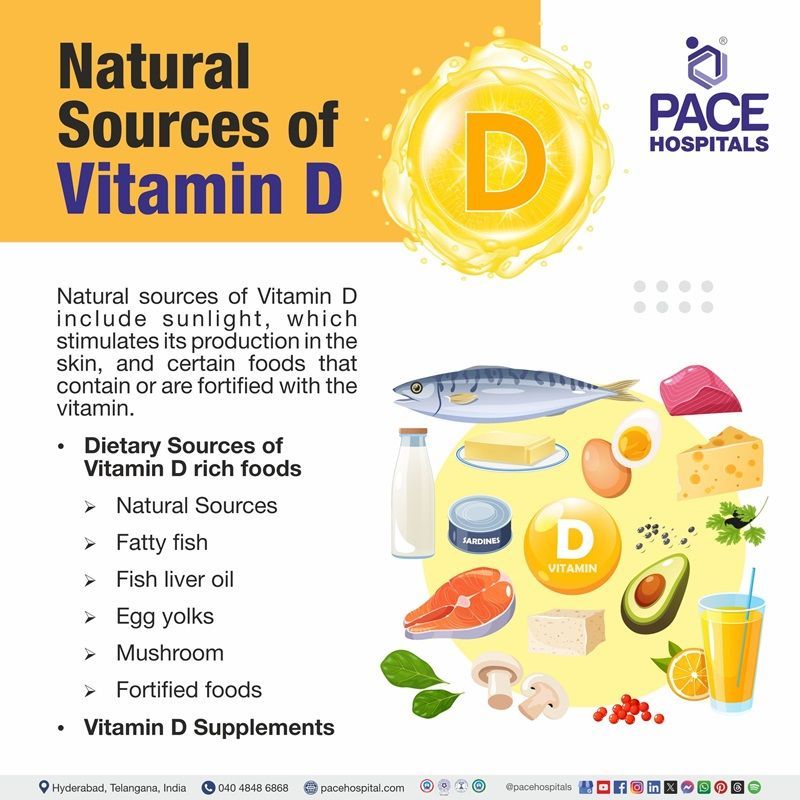
Natural sources of vitamin D
Sunlight: Sunlight is the primary and major source of vitamin D. Specifically, ultraviolet B (UVB) rays convert 7-dehydrocholesterol to pre-vitamin D3, which is rapidly converted to vitamin D3.
Factors affecting synthesis:
- Geographical location: People living in higher latitudes experience limited UVB exposure, especially in the winter months, reducing natural vitamin D synthesis.
- Season and time of day: Midday sun is the most potent for UVB exposure. Sun exposure in the early morning or late afternoon may be less effective.
- Skin pigmentation: Melanin in darker skin reduces UVB penetration, so individuals with darker skin may require longer exposure for adequate vitamin D production.
- Sunscreen and clothing: Sunscreen SPF 15 or higher blocks about 99% of UVB rays, significantly lowering vitamin D production. While sunlight is a potent source, factors like lifestyle, age, and environmental conditions often make supplementation necessary.
Dietary sources of vitamin D rich foods
- Natural sources: Few foods naturally contain vitamin D. The best sources include:
- Fatty fish: Some of the fatty fish rich in vitamin D3 are Salmon, mackerel, and sardines.
- Fish liver oils: Fish cod liver oil is an incredibly potent source.
- Egg yolks: Provide moderate amounts, mainly in D3 form.
- Mushrooms: Certain mushrooms like maitake and shiitake contain vitamin D2, especially when exposed to sunlight or UV light.
- Fortified foods: Due to limited natural sources, most of the foods are vitamin-D-fortified, which includes milk, orange juice, cereals, and plant-based milk alternatives.
- Vitamin D supplements: Vitamin D tablets/supplements are helpful in preventing and treating the deficiency. Vitamin D3 supplements are typically more effective than D2 at raising and maintaining blood levels, with longer-lasting effects.
Metabolism of vitamin D
Vitamin D undergoes two hydroxylation steps for activation:
- Step 1 – Liver: Both D2 and D3 are first hydroxylated by liver enzymes (mainly 25-hydroxylase) to form 25-hydroxyvitamin D [25(OH)D], also called calcidiol. This form is the major circulating form and is typically measured to assess vitamin D status.
- Step 2 – Kidneys: The 25(OH)D travels to the kidneys, where it is hydroxylated again by the enzyme 1α-hydroxylase, converting it to the active form, 1,25-dihydroxyvitamin D [1,25(OH)2D] or calcitriol.
- Deactivation and excretion: The enzyme 24-hydroxylase inactivates excess active vitamin D, converting it to calcitroic acid and other metabolites for safe excretion.
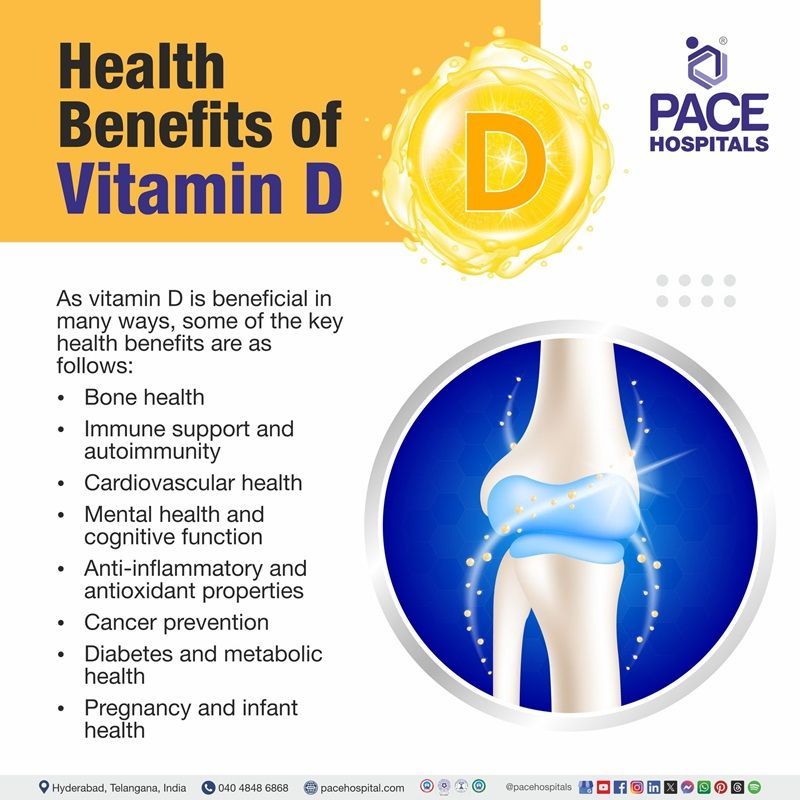
Health benefits of vitamin D
- Bone health: Promotes calcium absorption in the gut, maintaining adequate serum calcium and phosphate levels to enable normal bone mineralization. This vitamin also prevents rickets in children and osteomalacia in adults.
- Immune system support: Enhances the pathogen-fighting effects of monocytes and macrophages, and reduces the risk of chronic infections, autoimmune diseases (e.g., multiple sclerosis, rheumatoid arthritis), and respiratory infections.
- Muscle function: Improves muscle strength and reduces the risk of falls in older adults. Moreover, this vitamin is vital for muscle contraction and coordination.
- Cardiovascular health: Regulates blood pressure by improving endothelial function and lowers the risk of hypertension, myocardial infarction, and other cardiovascular diseases.
- Mental health and cognitive function: Plays a role in regulating mood and warding off depression. Low levels have been linked to cognitive decline and dementia, especially in the older population.
- Anti-inflammatory and antioxidant properties: Reduces inflammation, potentially benefiting conditions like rheumatoid arthritis and inflammatory bowel disease. Supports skin health by reducing psoriasis flare-ups and promoting healing.
- Cancer prevention: Some studies suggest it may reduce the risk of certain cancers (e.g., breast, prostate, colon) by regulating cell growth and reducing abnormal cell proliferation.
- Diabetes and metabolic health: Helps regulate insulin secretion and glucose tolerance and may reduce the risk of developing type 2 diabetes.
- Pregnancy and infant health: Supports foetal bone development and reduces the risk of preeclampsia. Adequate levels in mothers may reduce the risk of asthma and allergic diseases in children.
Causes of vitamin D deficiency
Vitamin D deficiency occurs when the body doesn’t get enough of this vital nutrient from sunlight, food, or supplements. Here’s a detailed look at the common causes:
- Limited sun exposure: People in northern latitudes, those who are homebound, and individuals who cover most of their skin for cultural or health reasons have lower sun exposure.
- Dietary restrictions: Vegan diets or those low in animal products may lack vitamin D3 sources.
- Malabsorption syndromes: Diseases like Crohn’s disease, celiac disease, and cystic fibrosis impair fat absorption, leading to reduced vitamin D uptake.
- Obesity: Adipose tissue sequesters vitamin D, making it less bioavailable in obese individuals.
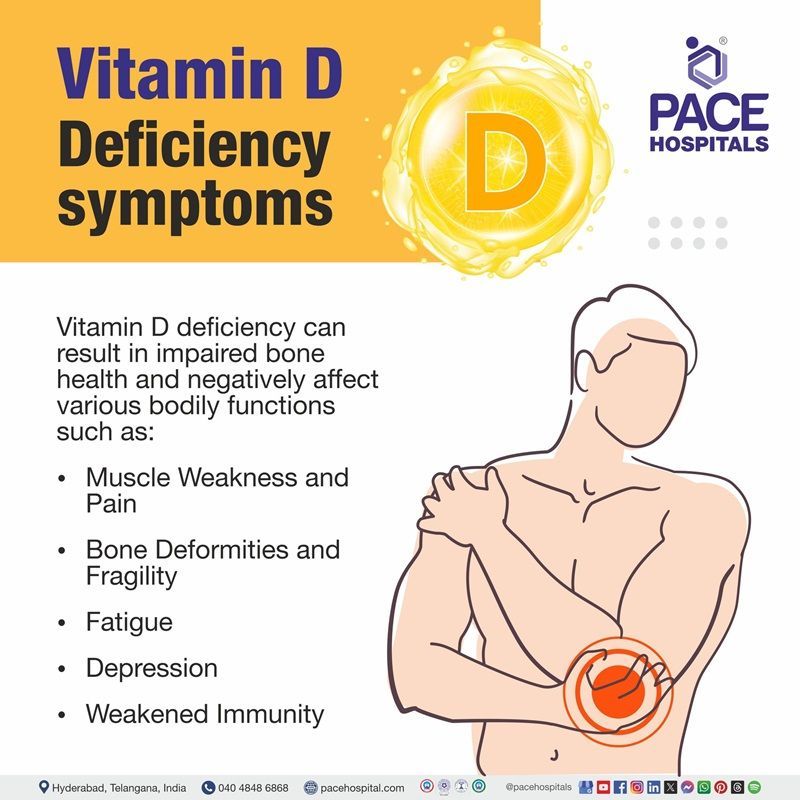
Vitamin D deficiency symptoms
- Muscle weakness and pain: These are often early signs and result from impaired calcium absorption.
- Bone deformities and fragility: In children, deficiency leads to rickets with bone deformities. In adults, it results in osteomalacia, with soft bones that are prone to fractures.
- Fatigue, depression, and weakened immunity: Insufficient vitamin D is linked with mood disorders, lower immunity, and general fatigue.
Diagnosis of vitamin D deficiency
- Serum 25(oh)d testing: this is the standard test, with levels categorized as:
- Deficiency: <20 ng/ml
- Insufficiency: 20–29 ng/ml
- Sufficiency: ≥30 ng/ml
Vitamin D deficiency treatment
Vitamin D deficiency is typically treated with supplements, either D2 or D3. For severe deficiency, high-dose therapy (e.g., 50,000 IU weekly) may be prescribed for several weeks before transitioning to a lower maintenance dose.
Vitamin D toxicity
- Causes of toxicity: Toxicity is rare but usually results from excessive intake of vitamin D supplements rather than dietary or sunlight sources.
- Symptoms of toxicity
- Hypercalcemia: High calcium levels can cause nausea, vomiting, muscle weakness, confusion, and dehydration.
- Kidney and cardiovascular damage: Persistent hypercalcemia can lead to kidney stones, nephrocalcinosis, and heart arrhythmias.
- Diagnosis and management: Toxicity is diagnosed with serum 25(OH)D levels >150 ng/mL. Management includes stopping vitamin D, increasing hydration, and, in severe cases, using medications to lower calcium.
Recommended dietary allowances (RDA) of vitamin D
The RDA/ vitamin D normal range varies by age and life stage to ensure sufficient levels for bone health and disease prevention:
- Infants (0–12 months): 400 IU/day
- Children and Adults (1–70 years): 600 IU/day
- Older Adults (>70 years): 800 IU/day
- Pregnant and Lactating Women: 600 IU/day
Frequently Asked Questions (FAQs) on Vitamin D
What happens if vitamin D is low?
Deficiency of vitamin D can lead to multiple bone disorders like rickets, osteoporosis, muscles weakness, and increased risk to infections. Chronic deficiency may also be linked to depression, cardiovascular diseases, and certain cancers due to Vitamin D's role in immune modulation and cellular health.
What are common symptoms of Vitamin D deficiency?
Symptoms include fatigue, bone pain, muscle weakness, frequent infections, and mood changes such as depression. In extreme situations, the shortage of vitamin D can cause rickets in children and osteomalacia in adults, both of which impair bone growth and health.
What are the primary sources of Vitamin D?
Supplements, diet, and sun exposure are some of the main sources of vitamin D. Egg yolks, fortified dairy products, and fatty fish such as mackerel and salmon are foods that are rich in vitamin D. Although vitamin D production in the skin is triggered by sunlight, daily requirements are frequently met through supplementation.
What are the recommended daily intakes of Vitamin D?
The recommended intake varies by age, sex, and health status. Generally, 600-800 IU per day is suggested for adult population, whereas geriatric adults may require higher amounts (800-1000 IU) to maintain bone health and immune function. Consult a doctor for personalized advice.
What are the risk factors for Vitamin D deficiency?
Risk factors include limited sun exposure, darker skin, ageing (reduces skin synthesis), obesity (Vitamin D is stored in fat and less available), certain medical conditions (e.g., Crohn’s, celiac), and living in high latitudes with limited sunlight during winter months.
What is Vitamin D, and why is it important?
Vitamin D, a fat-soluble vitamin D is important for maintaining strong bones, supporting immune function, and helping muscles function properly. It helps in the absorption of calcium, which is crucial for bone health and plays a vital role in reducing inflammation and modulating cell growth.
How can one increase vitamin D levels?
To increase Vitamin D levels, get 10-30 minutes of midday sun exposure, eat Vitamin D-rich foods like fatty fish and fortified dairy, and consider taking Vitamin D3 supplements. Regular testing can guide adjustments. And consult a doctor for personalized advice.
Does milk contain vitamin D?
Yes, milk often contains Vitamin D, especially if it's fortified. In many countries, cow’s milk and plant-based alternatives (like almond, soy, and oat milk) are fortified with Vitamin D to help people meet their daily intake. Natural Vitamin D levels in cow’s milk are low, so fortification adds about 100 IU per cup. However, check labels, as Vitamin D fortification varies by brand and type.
How much sun exposure is needed for adequate Vitamin D?
Generally, 10-30 minutes of midday sun exposure a few times a week is sufficient for most people, depending on skin type, latitude, and season. Darker-skinned individuals may require more sun exposure due to higher melanin levels, which reduce Vitamin D synthesis.
Are vitamin D and D3 the same?
Vitamin D and D3 are related but not exactly the same. "Vitamin D" is a general term that includes several forms, while Vitamin D3 (cholecalciferol) is a specific form of Vitamin D. D3 is the form produced in the skin in response to sunlight and is found in animal-based foods and most supplements. It is more effective at raising and maintaining Vitamin D levels in the blood than Vitamin D2 (ergocalciferol), another form typically found in plant sources and some supplements.
Does sunscreen lotions block vitamin D absorption?
Yes, sunscreen can reduce Vitamin D synthesis in the skin because it blocks UVB rays, which are necessary for Vitamin D production. Sunscreens with SPF 15 or higher can decrease Vitamin D synthesis by around 93-98%. However, in real-life usage, people often don’t apply enough sunscreen or reapply frequently, so some Vitamin D production still occurs. To balance sun protection and Vitamin D needs, brief, unprotected sun exposure (about 10-15 minutes) on small areas of skin a few times per week may be helpful.
What is the best time to take vitamin D supplements?
The best time to take Vitamin D supplements is generally with a meal containing healthy fats, such as lunch or dinner, to enhance absorption since Vitamin D is fat-soluble. Some people find that taking Vitamin D earlier in the day, like with breakfast or lunch, avoids possible interference with sleep, though research on this is limited. Consistency in timing is key for maintaining steady Vitamin D levels, so choose a time that fits well with your routine.
Can Vitamin D be obtained through diet alone?
While some foods contain Vitamin D, it can be challenging to meet daily requirements through diet alone. Fish, fortified dairy products, and mushrooms contain Vitamin D, but sunlight exposure or supplements are often necessary for adequate levels, especially in higher latitudes.
How much vitamin D per day is essential for a woman?
For most women, the recommended daily intake of Vitamin D is 600 IU (15 mcg) for women aged 19-70 and 800 IU (20 mcg) for women over 70. Some women, such as those with limited sun exposure, osteoporosis, or certain health conditions, may benefit from higher amounts. The safe upper limit is 4,000 IU per day for most adults, but it’s best to consult a doctor for personalized advice.
Does vitamin d deficiency cause hair loss?
Yes, Vitamin D deficiency can contribute to hair loss. Vitamin D plays a role in hair follicle cycling, helping maintain healthy hair growth. Low levels may be linked to conditions like alopecia areata, an autoimmune disorder causing patchy hair loss. Supplementing Vitamin D can support hair health, but addressing underlying causes with the doctor is essential for effective treatment.
Can I take too much Vitamin D?
No, excessive Vitamin D intake can lead to toxicity, resulting in high blood calcium levels (hypercalcemia). Symptoms include nausea, vomiting, weakness, and in severe cases, kidney damage. It is advised not to exceed 4000 IU daily without medical supervision.
What is the difference between Vitamin D2 and D3?
Vitamin D2 (ergocalciferol) is typically plant-derived, while D3 (cholecalciferol) comes from animal sources and is more effective at raising blood vitamin D levels. D3 is also synthesized by sunlight in human skin, making it the preferred supplement form.
How is Vitamin D deficiency diagnosed?
A blood test measuring 25-hydroxyvitamin D (25(OH)D) is used to diagnose deficiency. Levels below 20 ng/mL are considered deficient, while 20-30 ng/mL is insufficient. 30-50 ng/mL can be optimal levels for most of the people.
Can Vitamin D help prevent or treat COVID-19?
Research suggests Vitamin D supports immune health and may reduce the risk of respiratory infections. While Vitamin D deficiency has been associated with worse COVID-19 outcomes, it is not a treatment for COVID-19. Supplements may be beneficial for immune support.
Is Vitamin D beneficial for mental health?
Some studies suggest that Vitamin D deficiency may be linked to depression and seasonal affective disorder (SAD). Vitamin D plays a role in brain health, and supplementation may help improve mood in deficient individuals, though more research is needed.
Does Vitamin D help in weight gain?
Vitamin D itself does not directly cause weight gain, but it plays a role in metabolism and overall health, which may indirectly influence weight. Deficiency in vitamin D has been linked to obesity, as low levels can impact fat storage and insulin sensitivity. Ensuring adequate vitamin D levels may support balanced metabolic function and muscle health, potentially helping with weight management rather than contributing to weight gain directly.
Can Vitamin D support heart health?
Vitamin D is thought to play a role in cardiovascular health. Low levels have been associated with an increased risk of hypertension and cardiovascular disease, though more research is needed to establish if supplementation directly reduces cardiovascular risk.
Is Vitamin D safe for pregnant women?
Yes, vitamin D is important during pregnancy for maternal and fetal health, supporting bone development and reducing the risk of preterm birth. Pregnant women are advised to maintain sufficient levels, typically through prenatal vitamins, diet, and safe sun exposure.
How long does it take to correct Vitamin D deficiency?
With appropriate supplementation, it typically takes a few weeks to a few months to restore normal levels, depending on the severity of the deficiency and dosage. Regular monitoring by a doctor is essential to adjust dosage as needed.
Does Vitamin D improve bone health in older adults?
Yes, vitamin D plays a crucial role in calcium absorption and bone health, reducing the risk of fractures in older adults. Combining vitamin D with calcium is beneficial in preventing osteoporosis and improving bone density, particularly in postmenopausal women and elderly men.
Can children have Vitamin D deficiency?
Yes, children can develop vitamin D deficiency, especially if they have limited sun exposure or do not consume fortified foods. Deficiency in children can lead to rickets, a condition that softens bones and affects growth. Pediatricians may recommend supplements if needed.
Does Vitamin D interact with medications?
Yes, certain medications can interfere with vitamin D absorption or metabolism. These include anticonvulsants, glucocorticoids, and some weight-loss drugs. Patients should consult their doctor to manage potential interactions if they take these medications regularly.
- Systemic diseases with a photosensitive component
- systemic lupus erythematosus
- dermatomyositis
- Photodermatoses
- Xeroderma pigmentosum
- Basal cell nevus syndrome
Share on
Request an appointment
Fill in the appointment form or call us instantly to book a confirmed appointment with our super specialist at 04048486868

